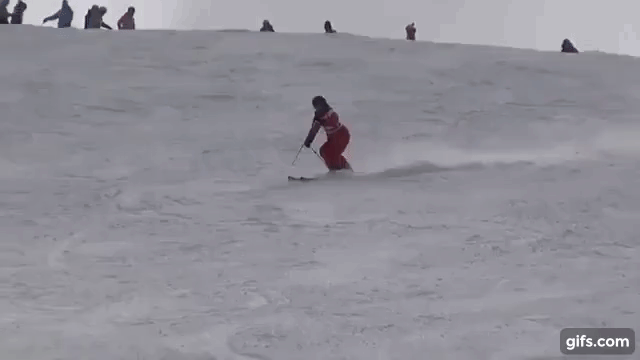- Joined
- Dec 21, 2015
- Posts
- 4,123
its intentionally vague because of how opened end of a sport skiing is. Get back to the first post made by @Erik Timmerman where he just simply said "be in balance" this particular fundamental is simply talking about moving in such a way that you can pressure the area of the ski that needs to be pressures at the given time. For 95 percent of our lesson that means getting people to be somewhere in the center most of the time. For the other 5 percent is means getting people to move their COM to places most deem uncomfortable to get more performance or something different out of the ski.
In fact 3 of are literally just about pressure management/control.) Hell I even hate the word pressure especially for the "the direct pressure towards the outside ski" Direct balance or weight sure but direct pressure mis interrupted could lead to some instructor telling people to press on their outside foot or the case of this fore and aft fundamental people who think you press on the front of your boot, there are time where the front of your boot will press on you, but never a time where you should press on it.
I generally think of pressure management in all planes as my skis/boots pressing back on me. IE if I move forward my tips press on me, If I move back my tails press me, If I shorten a leg more than the other than the other leg presses on me, if extend my legs the skis tend to press on me, and conversely if I retract I lose pressure and lastly and not included in the 5 fundamentals(yet) is if I resist the rotation of my skis, the rotation of the skis again presses on me. Maybe that is included in "Control the skis’ rotation (turning, pivoting, steering) with leg rotation, separate from the upper body " but imo the motion I am talking about is foreign to almost all in the PSIA. (start another thread if you want to talk about it)
most people who have cliniced with me/been taught by me either knowingly or unknowingly have been taught to move around the hill by do the movements that lets the skis take them places, that can sound really passive but in practice its not, its just means that are skis take us places because of the external input we are providing them.
In fact 3 of are literally just about pressure management/control.) Hell I even hate the word pressure especially for the "the direct pressure towards the outside ski" Direct balance or weight sure but direct pressure mis interrupted could lead to some instructor telling people to press on their outside foot or the case of this fore and aft fundamental people who think you press on the front of your boot, there are time where the front of your boot will press on you, but never a time where you should press on it.
I generally think of pressure management in all planes as my skis/boots pressing back on me. IE if I move forward my tips press on me, If I move back my tails press me, If I shorten a leg more than the other than the other leg presses on me, if extend my legs the skis tend to press on me, and conversely if I retract I lose pressure and lastly and not included in the 5 fundamentals(yet) is if I resist the rotation of my skis, the rotation of the skis again presses on me. Maybe that is included in "Control the skis’ rotation (turning, pivoting, steering) with leg rotation, separate from the upper body " but imo the motion I am talking about is foreign to almost all in the PSIA. (start another thread if you want to talk about it)
most people who have cliniced with me/been taught by me either knowingly or unknowingly have been taught to move around the hill by do the movements that lets the skis take them places, that can sound really passive but in practice its not, its just means that are skis take us places because of the external input we are providing them.
Last edited:
